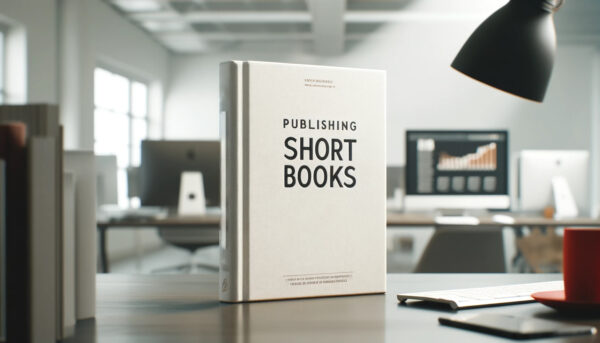Amazon has established itself as a colossal force in the book industry, transforming the way books are published, sold, and consumed globally. Its platform, Amazon Kindle Direct Publishing (KDP), has democratized publishing by allowing authors to bypass traditional gatekeepers and directly reach a vast audience. This shift has fundamentally altered the dynamics of the publishing world, positioning Amazon not only as a retail giant but also as a pivotal player in the digital publishing arena.
For self-published authors, KDP offers an unparalleled opportunity to maintain control over their work—from setting their own list prices to making instantaneous updates to their content. The platform’s comprehensive tools and services, such as detailed sales analytics and promotional tools, empower authors to take charge of their publishing journey. Moreover, the vast reach of Amazon’s marketplace means that books published through KDP can potentially be accessed by millions of readers around the world, offering authors a chance to achieve substantial visibility and commercial success. This accessibility and control make Amazon KDP a highly relevant and appealing option for authors looking to self-publish in today’s digital-first book market.
Understanding Amazon Kindle Direct Publishing (KDP)
Amazon Kindle Direct Publishing (KDP) is a platform that has revolutionized the way authors approach the publishing process, providing a streamlined, user-friendly interface that allows authors to publish their books directly to Amazon’s Kindle Store, including the flexibility to publish both kindle ebook and kindle ebooks. This self-publishing tool is accessible to anyone with a manuscript, from seasoned authors to first-time writers, facilitating the publication of both eBooks and paperbacks.
How KDP Works:
KDP enables authors to publish their work in a few simple steps. First, authors must create a KDP account, after which they can upload their manuscript in a supported format, such as DOC, DOCX, or PDF for print, and EPUB or MOBI for eBooks. Authors then choose their book’s details, including title, description, and keywords to optimize search visibility. They can also design a cover using KDP’s cover creator tool or upload their own professional design. After setting the list price and distribution channels, the book is published upon Amazon’s approval, typically appearing in the Kindle Store within 24 to 48 hours. KDP also offers a real-time tracking system that allows authors to monitor their sales and royalties.
Differences Between KDP and Traditional Publishing:
The most significant difference between KDP and traditional publishing is the gatekeeping process. Traditional publishing involves a more rigorous selection process, requiring authors to secure a literary agent and get the approval of publishing house editors. This process can be lengthy and challenging, with no guarantee of acceptance. In contrast, KDP allows virtually anyone to publish a book, ensuring a much quicker route from manuscript to market. However, traditional publishers offer editorial services, marketing support, and distribution networks that KDP authors need to manage themselves or outsource.
Your Publishing Journey Awaits – Start NowBenefits of Using KDP for Self-Publishing:
- Control and Flexibility for Self-Published Authors: Self-published authors retain complete control over their book’s content, pricing, and revisions through Amazon KDP. This level of autonomy is particularly appealing to those who wish to retain creative control or publish niche content that might not attract traditional publishers, highlighting the unique opportunities and challenges faced by self-published authors on platforms like Amazon KDP.
- Higher Royalties: KDP offers up to 70% royalty on sales in select countries, significantly higher than traditional publishing norms.
- Global Distribution: Books published via KDP can reach a global audience, available in over 100 countries, enhancing the potential for international sales.
Limitations of Using KDP:
- Marketing and Promotion: Authors are largely responsible for their own marketing and promotion, tasks that are typically handled by traditional publishers. Without effective marketing strategies, books may struggle to gain visibility.
- Quality Control: The lack of professional editing, design, and formatting services can impact the quality of self-published books, potentially affecting sales and reviews.
- Perceived Prestige: Books published through KDP might not receive the same level of recognition or prestige as those published by traditional houses, which can influence sales and opportunities.
Despite these limitations, Amazon KDP remains a powerful platform for authors who desire more control over their publishing journey and aspire to reach readers directly. Its ease of use and the potential for high royalties make it an attractive option for many writers entering the publishing industry.
Amazon Publishing Profitability: The Economics of Self-Publishing on Amazon
Self-publishing on Amazon through Kindle Direct Publishing (KDP) presents an accessible path for authors to bring their books to market, including the lucrative opportunity of ebook sales which can significantly boost an author’s potential earnings through various royalty rates and options. However, understanding the economics behind it, from initial costs to potential earnings, is crucial for any author considering this route. This includes not only the potential earnings from ebook sales but also the opportunity to earn royalties from print book sales, which can be offered in both paperback and hardcover formats through Amazon’s Expanded Distribution to libraries and book retailers, all without upfront costs or inventory due to on-demand printing.
Additionally, authors must consider the printing costs associated with self-publishing print books on Amazon, including file delivery costs and the use of a pricing calculator to estimate these printing costs and potential royalties.
Costs Associated with Self-Publishing:
1. Book Cover Design:
The cover of a book is often the first impression it makes on potential readers. Costs for professional cover design can range from $100 to over $500 depending on the designer’s experience and the complexity of the design. While KDP offers a free cover design tool, custom covers typically attract more attention and can significantly impact sales.
2. Editing:
Professional editing ensures that a book is grammatically correct and free from plot inconsistencies, enhancing readability and overall quality. Editing services can vary widely in price, typically charging anywhere from $0.01 to $0.05 per word. This means a 60,000-word novel could cost between $600 and $3,000 to edit, depending on the depth of editing involved (copy editing, developmental editing, etc.).
3. Formatting:
Formatting a book for Kindle or print can be technically challenging, involving aspects like setting the correct dimensions, and margins, and ensuring the text flows correctly on different devices. Formatting services can range from $50 to $300. Alternatively, authors can use tools like the Kindle Create app, which is free and helps format eBooks and paperbacks.
KDP’s Royalty Structure and Pricing Options:
Amazon KDP offers two main royalty options: 35% and 70%. The 70% royalty option is available for books priced between $2.99 and $9.99 in specific territories. Otherwise, the 35% option applies, which allows authors to price their books as low as $0.99 or as high as they choose. When setting prices, authors should consider their book’s length, genre, and competitive titles to ensure they strike a balance between attractiveness to readers and profitability.
Impact of Kindle Unlimited and Kindle Owners’ Lending Library on Royalties:
Kindle Unlimited (KU) and the Kindle Owners’ Lending Library (KOLL) offer unique revenue opportunities and challenges for self-published authors:
Kindle Unlimited: KU is a subscription service where readers pay a monthly fee to access a library of eBooks. Authors are paid based on the number of pages read from their books rather than sales. The payment comes from the KDP Select Global Fund, and the amount per page changes monthly, generally falling between $0.004 and $0.005 per page.
Enrolling in KDP Select also opens up the opportunity to reach millions of Kindle Unlimited subscribers in various countries, allowing authors to earn royalties based on the number of pages these subscribers read, alongside access to promotional tools designed to maximize sales potential. While this model can significantly benefit authors with lengthy books that engage readers to read cover-to-cover, it can also mean fluctuating income that is hard to predict.
Kindle Owners’ Lending Library: KOLL allows Amazon Prime members to borrow one book per month for free. Like KU, authors are compensated from the Global Fund based on borrows and pages read. Participation in KOLL requires enrollment in KDP Select, which demands an exclusive distribution agreement for the eBook version of the book for at least 90 days.
Both programs can increase an author’s visibility and readership but at the potential cost of lower individual sale profits and the requirement of exclusivity, which prevents distribution on other platforms.
In conclusion, while self-publishing on Amazon KDP offers a platform with vast potential reach and higher-than-average royalties, it also necessitates upfront investment in terms of book preparation and ongoing efforts in marketing. The choice to engage with Amazon’s KDP Select programs like KU and KOLL should be weighed against the potential for earnings from wider distribution and direct sales. Understanding these economic factors helps authors make informed decisions, balancing investment against potential returns to achieve their publishing goals.
Your Publishing Journey Awaits – Start NowMarketing and Sales on Amazon
Successfully marketing and selling a book on Amazon involves more than just publishing it; strategic efforts are required to enhance visibility and attract readers. This section delves into the critical components of book marketing on Amazon, including the significance of the book cover, description, keyword research, Amazon ads, and the pivotal role of book reviews.
1. Importance of Book Cover, Description, and Keyword Research:
Book Cover: The adage “don’t judge a book by its cover” doesn’t hold in the book market. A professional and compelling cover design is crucial as it makes the first impression on potential readers. The cover should not only be visually appealing but also genre-appropriate, conveying the book’s tone and subject at a glance, which can significantly increase the chances of a reader clicking on the title to learn more.
Book Description: Once a potential reader clicks on a book, the description serves as the primary selling tool. A well-crafted description introduces the plot or core ideas succinctly, hooks the reader with intriguing details, and ends with a strong call to action. This narrative should be engaging, clear, and polished to convert interest into sales.
Keyword Research: Effective keyword usage ensures that the book surfaces in relevant search results, reaching the right audience. Keywords should be strategically selected based on what potential readers might enter when looking for their next read. Authors should incorporate these keywords naturally in the title, subtitle, and description, optimizing discoverability in Amazon’s vast marketplace.
2. Using Amazon Ads and Marketing Tools to Boost Visibility and Sales:
Amazon Ads: Authors can use Amazon Advertising to create ads for their books that appear in search results and on product pages, which can significantly enhance visibility. Options include Sponsored Products, Sponsored Brands, and Lockscreen Ads, each allowing targeting by keywords, interests, and more. These ads operate on a pay-per-click model, meaning authors only pay when a potential buyer clicks on the ad.
Marketing Tools: Besides ads, authors can leverage tools such as the Amazon Author Central page to share detailed author bios, link to their websites, and highlight their entire book catalog. Promotions like Kindle Countdown Deals and Free Book Promotions help spike interest and downloads. Participation in these promotions often results in increased visibility and, subsequently, higher sales and reviews.
3. Role of Book Reviews and Social Proof in Driving Sales:
Book Reviews: Reviews are a form of social proof critical to the success of a book on Amazon. Positive reviews can significantly influence a potential buyer’s decision, providing assurance of the book’s quality. Reviews also affect a book’s ranking on Amazon, which directly impacts visibility. Encouraging readers to leave honest feedback, especially immediately following a launch or promotion, can help accumulate reviews.
Building Social Proof: Beyond reviews, other forms of social proof include ratings, testimonials, and mentions on social media or blogs. Authors can engage with readers through social media, email newsletters, and author websites to build a community around their books. This interaction not only fosters loyalty but also encourages readers to share their experiences with others, amplifying the author’s reach and credibility.
Marketing a book on Amazon requires a multifaceted approach, combining aesthetics and analytics to capture and maintain reader interest. By mastering these elements—crafting a compelling book cover and description, optimizing keywords, effectively using Amazon’s advertising tools, and cultivating positive reviews—authors can significantly increase their chances of commercial success. This strategy not only boosts immediate book sales but also builds an author’s reputation for future publishing endeavors.
Your Publishing Journey Awaits – Start NowProfitability Analysis for Self-Published Authors
The journey to profitability for self-published authors on Amazon can be complex, influenced by multiple factors such as the choice between eBooks and print books, pricing strategies, and the identification of a profitable niche. By examining the experiences of successful authors and analyzing relevant sales data, we can draw insights into the most effective practices for maximizing financial returns and look into the benefits of self-publishing.
Case Studies of Successful Self-Published Authors:
One illustrative example is the success story of E.L. James with “Fifty Shades of Grey,” which started as a self-published piece before becoming a worldwide phenomenon. Another example is Andy Weir, who initially published “The Martian” chapter by chapter on his own blog before self-publishing it on Amazon, eventually leading to a best-selling print deal and a major film adaptation. These authors capitalized on unique niches that attracted specific reader demographics and utilized the flexibility of self-publishing to adjust their marketing and distribution strategies effectively.
Analysis of Sales Data: eBooks vs. Print Books, and Impact of Pricing Strategies:
Data trends indicate that eBooks often provide a higher margin of profitability due to lower production costs compared to print books. For instance, while the royalty on eBooks priced between $2.99 and $9.99 can be as high as 70%, print books yield lower returns due to the cost of materials and distribution. Pricing strategies also play a crucial role; for eBooks, the $2.99 to $9.99 range often hits a sweet spot, balancing affordability with author royalties. Price adjustments and promotions can be used strategically to drive sales volume, especially during initial launch phases or when trying to increase readership during slow periods.
Finding a Profitable Niche and Understanding the Target Audience:
Success in self-publishing significantly depends on identifying a niche that is both underserved and popular among readers. For example, genres like romance and science fiction have dedicated and extensive readerships, providing a fertile ground for new authors. Successful self-published authors often conduct thorough market research to understand their target audience’s preferences, which helps in crafting content that meets readers’ expectations and enhances engagement.
Moreover, understanding the target audience extends beyond just knowing their genre preferences—it includes grasping the nuances of what specific themes, narrative styles, and character types resonate with them. This knowledge can then be leveraged to optimize book descriptions, cover designs, and marketing messages to appeal directly to the core demographic, increasing the likelihood of sales success.
In conclusion, while the path to profitability for self-published authors on Amazon is fraught with challenges, it also offers immense opportunities. By learning from successful case studies, analyzing sales data to optimize pricing, and identifying profitable niches, authors can strategically position themselves to maximize their earnings and achieve sustainable success in the competitive world of self-publishing.
Comparing Amazon with Other Publishing Platforms
Amazon Kindle Direct Publishing (KDP) is one of the leading platforms for self-publishing, but it is not without competition. Comparing it to other platforms can highlight distinct advantages and limitations, helping authors make informed choices about where to publish their work.
Pros and Cons of Amazon KDP vs. Other Self-Publishing Platforms:
– Pros of Amazon KDP:
- Market Reach: Amazon’s vast market presence offers unparalleled exposure, potentially reaching millions of readers globally.
- Integrated Services: Amazon provides a suite of tools for publishing, marketing, and tracking sales, all within one platform.
- Royalty Rates: Competitive royalty rates, especially the 70% option for certain price ranges and regions, are attractive to authors.
– Cons of Amazon KDP:
- Market Saturation: The large number of titles on Amazon can make it difficult for new authors to stand out without significant marketing efforts.
- Exclusivity Requirements: Programs like KDP Select require exclusivity, which limits authors’ ability to distribute their work on other platforms.
Comparison with Other Platforms:
Platforms like Smashwords, Draft2Digital, and IngramSpark offer alternatives with their own sets of benefits. For instance, Smashwords and Draft2Digital provide distribution to a wide range of eBook retailers, not just one marketplace, which can increase an author’s reach across multiple platforms without exclusivity clauses. IngramSpark also allows access to a vast network of bookstores and libraries, which is ideal for authors interested in extensive print distribution.
Impact of Amazon’s Market Share on Self-Publishing Success:
Amazon’s dominance in the eBook and print book market can significantly influence self-publishing success. The platform’s vast user base often translates into higher potential sales; however, this same factor can contribute to heightened competition among authors.
Opportunities and Challenges with Expanded Distribution Outside Amazon:
Expanding distribution beyond Amazon can open up opportunities to reach new audiences and reduce reliance on a single platform, mitigating risks associated with changes in Amazon’s policies or market conditions. However, managing multiple distribution channels can also complicate logistics, requiring more time and effort in administration and marketing.
While Amazon KDP offers significant advantages in terms of market reach and integrated services, weighing these against the benefits of broader distribution and less restrictive terms on other platforms is crucial. Authors must consider their specific needs, goals, and resources to determine the best platform(s) for their publishing endeavors.
Your Publishing Journey Awaits – Start NowConclusion: Is Amazon KDP a Sustainable Source of Income?
Amazon Kindle Direct Publishing (KDP) offers a significant opportunity for authors to generate income through self-publishing. The platform’s vast reach and flexible publishing options provide a conducive environment where motivated authors can indeed thrive financially. However, the potential for making a decent income varies widely and depends largely on the author’s ability to leverage the tools and opportunities provided by Amazon effectively.
The sustainability of income from KDP hinges on an author’s continuous effort in marketing, audience engagement, and regular content publication. Balancing the initial and ongoing investments in book production—including cover design, editing, and marketing—with the potential returns requires careful planning and strategic execution. Authors need to be adept at using Amazon’s analytics tools to track sales performance and adjust their strategies accordingly.
For aspiring authors considering Amazon for self-publishing, it is crucial to approach KDP with realistic expectations. Success does not usually come overnight but can be built over time with persistence, learning, and adaptation to market trends. Engaging with the community, continually enhancing one’s marketing skills, and staying updated with Amazon’s evolving publishing landscape are all essential for maintaining a steady and potentially growing income stream from KDP.
In conclusion, while Amazon KDP can be a sustainable source of income, it demands dedication, strategic planning, and a proactive approach to publishing and promotional activities. Authors who commit to understanding and navigating the complexities of the platform are the ones who are most likely to succeed and achieve financial sustainability.








